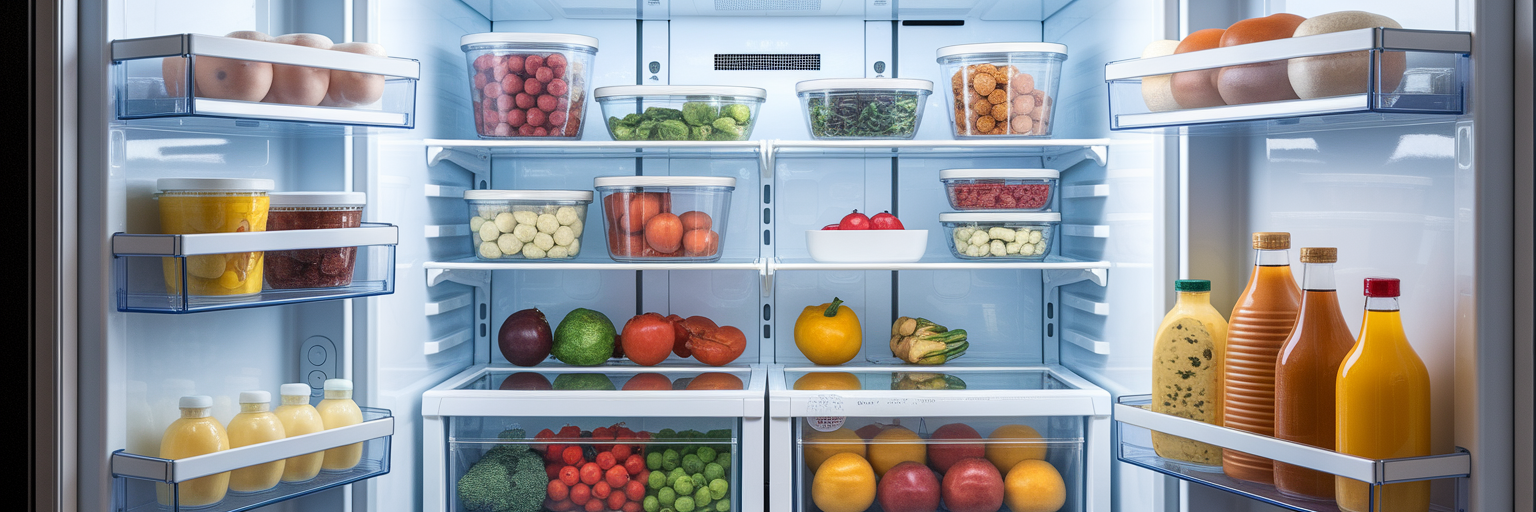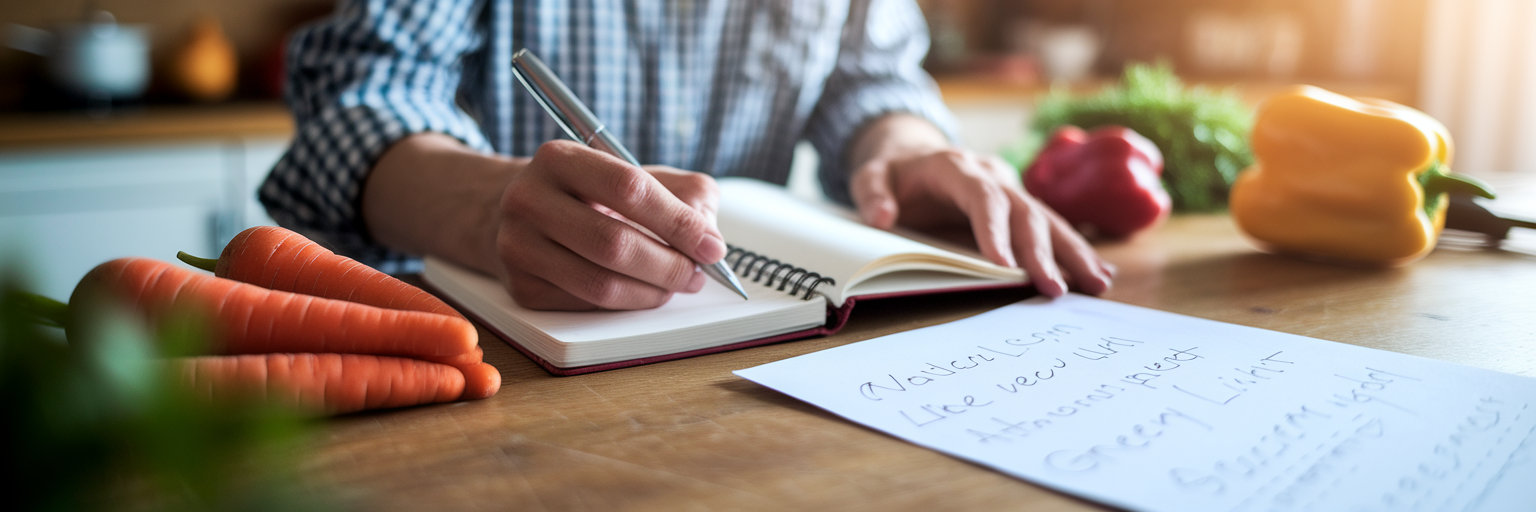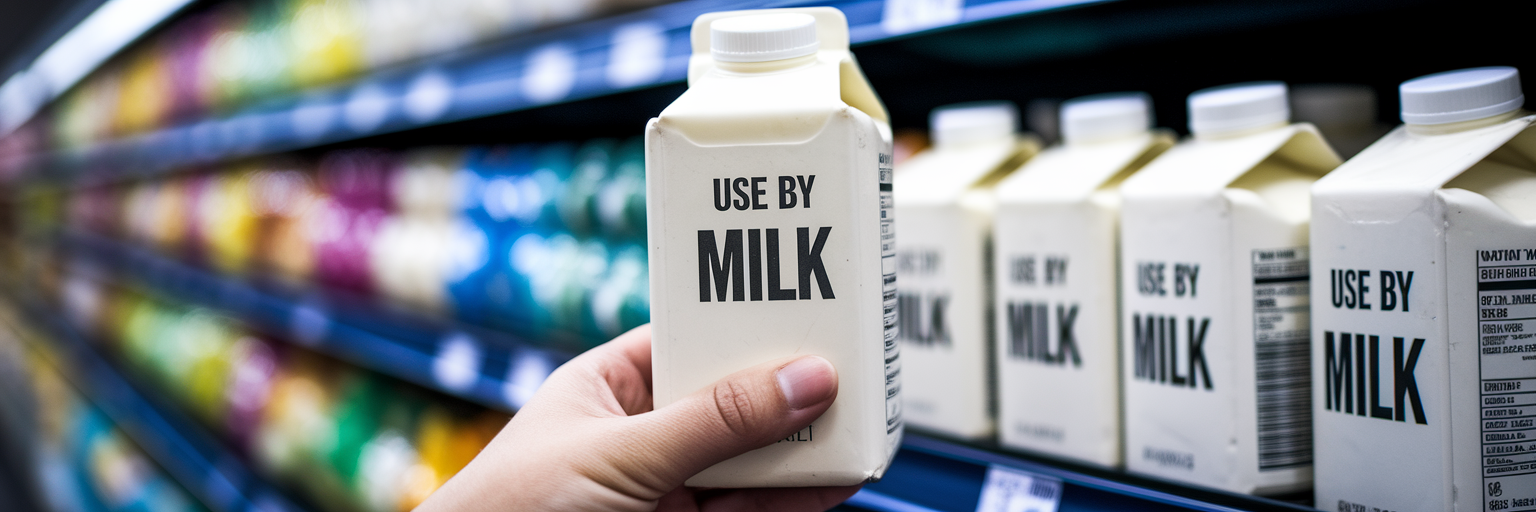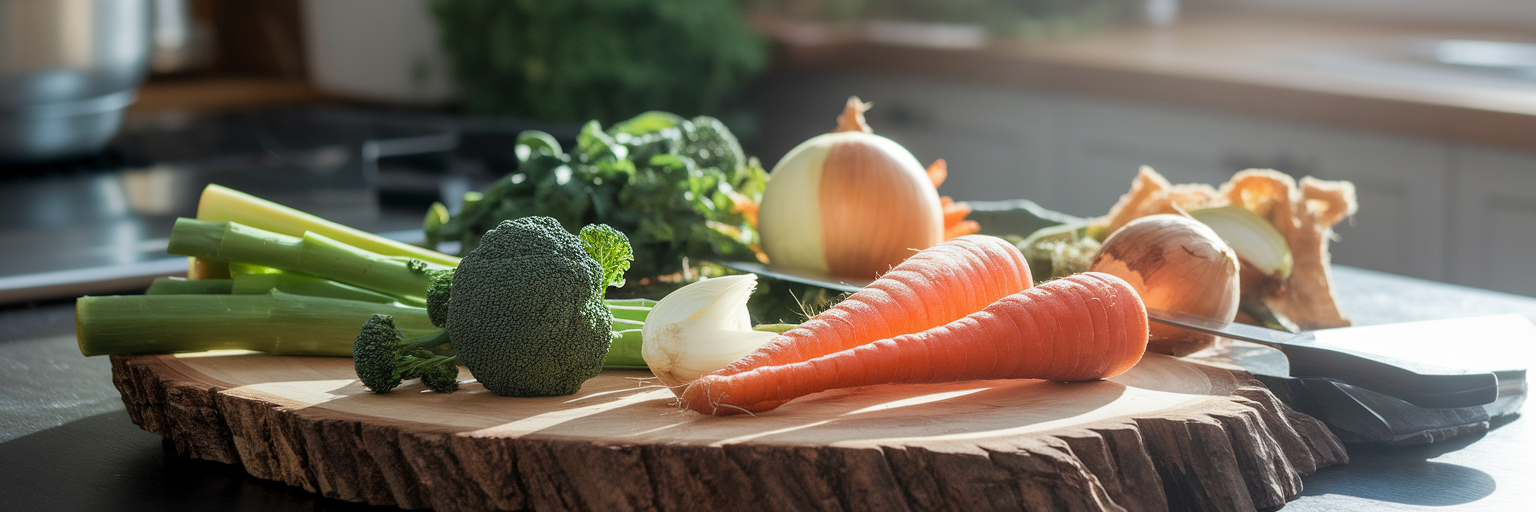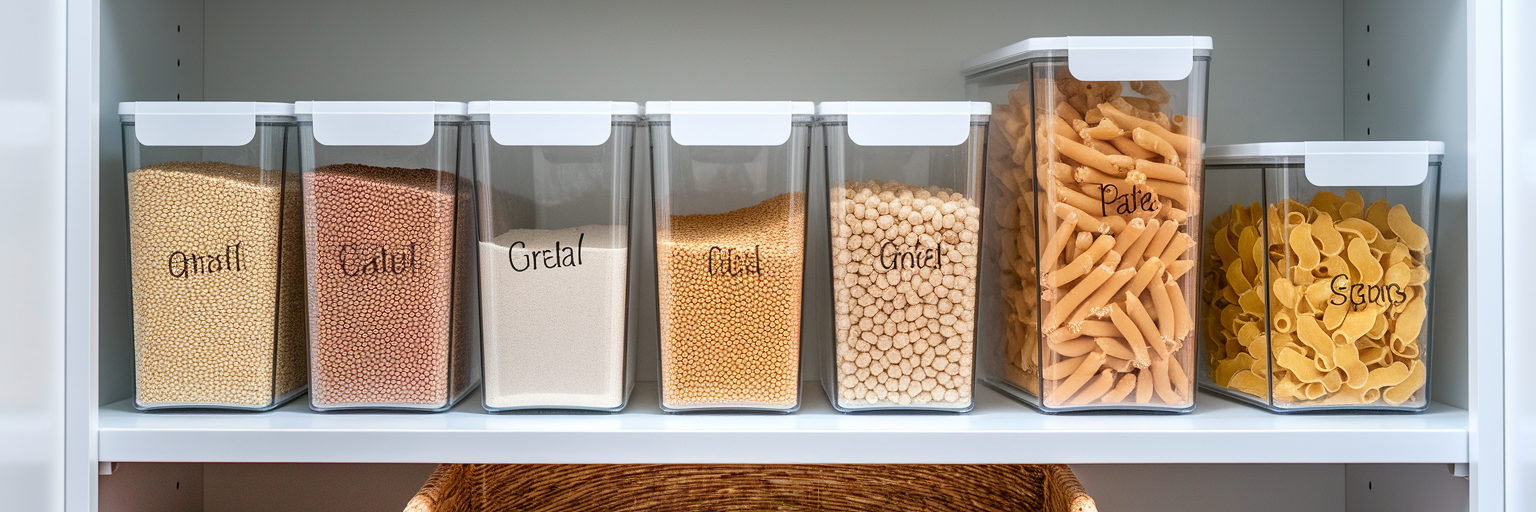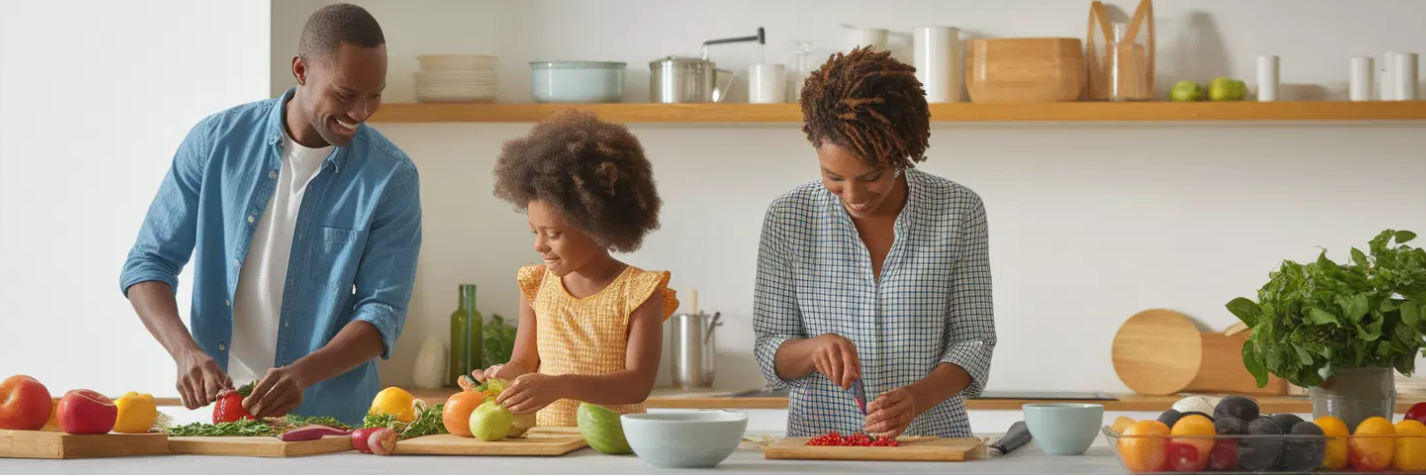Setting the Stage for a Less Wasteful Kitchen
It's a startling figure: the USDA estimates that in the United States, food waste is between 30 to 40 percent of the entire food supply. Much of this happens right in our own kitchens. But here’s the good news, tackling this issue doesn't require a complete lifestyle overhaul. By adopting a few straightforward habits, you can significantly reduce food waste at home. This means more money in your wallet, fresher meals on your table, and a lighter footprint on the environment. The strategies we'll explore are designed to be simple and empowering, helping you make a real difference without feeling overwhelmed. Think of it as making small tweaks for big rewards.
Technique 1: Master Food Storage for Longevity
Before you even think about recipes, how you store your groceries is a critical first step in waste prevention. Understanding proper food storage tips can dramatically extend the life of your ingredients. Different foods have different needs; what keeps your carrots crisp won't necessarily work for your bread. For instance, some fruits like apples and bananas release ethylene gas, which can speed up the ripening of nearby sensitive produce like leafy greens or broccoli, so storing them separately is wise. Herbs often stay fresher longer with their stems in a bit of water, like a bouquet. Using airtight containers helps maintain freshness and prevent contamination, while ensuring your refrigerator is at the correct temperature, around 40°F (4°C), and your freezer at 0°F (-18°C), is fundamental for food safety and longevity.
Understanding Storage Needs
Produce, dairy, grains, and meats each have unique requirements. Knowing these distinctions prevents premature spoilage.
Specific Produce Tips
Keep ethylene producers away from sensitive items. Wash berries just before eating, not when you bring them home, to prevent mold.
The Role of Containers and Temperature
Airtight containers shield food from air and moisture, while consistent, correct temperatures slow down bacterial growth.
Optimal Storage for Common Kitchen Staples
| Food Item | Best Storage Location | Key Tip |
|---|---|---|
| Leafy Greens (e.g., Spinach, Lettuce) | Refrigerator Crisper Drawer | Store unwashed in a breathable bag or container with a paper towel to absorb excess moisture. |
| Berries (e.g., Strawberries, Blueberries) | Refrigerator Shelf | Store unwashed in their original container or a breathable container; wash just before eating. |
| Bread (Artisan/Bakery) | Countertop (cool, dry place) or Freezer | Store in a bread box or paper bag for 1-2 days; for longer storage, slice and freeze in a freezer-safe bag. |
| Hard Cheese (e.g., Cheddar, Parmesan) | Refrigerator Cheese Drawer or Shelf | Wrap in cheese paper or parchment paper, then loosely in plastic wrap. Avoid tight plastic wrapping. |
| Raw Chicken or Meat | Refrigerator (lowest shelf) or Freezer | Store in original packaging on a plate to catch drips; use within 1-2 days or freeze immediately. |
Technique 2: Get Creative with Leftovers
Those containers of last night's dinner don't have to mean a boring repeat meal. Viewing leftovers as ingredients for new dishes is key. This approach transforms what's already cooked into exciting new possibilities, moving beyond simple reheating. Consider a weekly "use-it-up" meal where you combine various leftovers into something entirely fresh. This mindset shift is central to making the most of every bit of food. For more inspiration, resources like King Arthur Baking's blog offer extensive guides on transforming everyday leftovers.
Here are some creative leftover ideas:
Leftover chicken: Shred it for tacos, add it to salads (it would be a great base for something like this cook.aizdzj Chicken Salad), or toss it into soups.
Cooked vegetables: Incorporate them into frittatas, omelettes (imagine a delicious Broccoli and Cheddar Cheese Omelette), or blend them into smooth soups.
Stale bread: Transform it into croutons for salads, breadcrumbs for coating, or a comforting bread pudding (perhaps a Savory Bread Pudding).
Cooked rice/grains: Use these as a foundation for quick fried rice or nutritious grain bowls.
Technique 3: Plan Meals Strategically
Effective meal planning to reduce waste begins long before you step into a grocery store. It’s about knowing what you have and what you truly need. Before you even think about your shopping list, take a thorough look through your pantry, fridge, and freezer. This simple check prevents you from buying duplicates and helps you build meals around ingredients that need to be used soon. While a plan is important, building in some flexibility is also smart. This allows you to incorporate unexpected leftover ingredients or adjust if an item is nearing its use-by date. You can even use tools like cook.aizdzj recipe browser to find inspiration for using up specific items. Proactive planning is a cornerstone of a waste-conscious kitchen.
Technique 4: Leverage Technology for Smarter Cooking
In our connected world, technology offers innovative ways to manage our kitchens more efficiently, including the use of AI for cooking. Imagine having a personal assistant that looks at the random assortment of ingredients in your fridge and instantly suggests delicious recipes. AI-powered recipe generators and inventory apps do just that. They are particularly helpful for using up those odds and ends that might otherwise be forgotten and eventually discarded. For example, apps like cook.aizdzj are designed to help home cooks transform their available ingredients into tailored recipes. These tools can accommodate dietary preferences and even consider the cooking tools you own, simplifying the process of making the most of what you have and minimizing waste.
Technique 5: Understand Food Date Labels
Confusion over food date labels is a major contributor to unnecessary food waste in American homes. "Best By," "Sell By," and "Use By" dates can be perplexing. It's important to know that for many products, "Best By" and "Sell By" dates are primarily indicators of peak quality, not strict safety deadlines. Instead of immediately tossing food past these dates, use your senses. How does it look, smell, and feel? Often, food is perfectly fine. However, "Use By" dates, especially on perishable items like meat, fish, and dairy, should be taken more seriously for safety. The USDA provides detailed explanations on their website; as they state in their guide Food Product Dating, understanding these labels is key to preventing premature disposal of good food.
Technique 6: Adopt Smart Shopping Habits
Once your meal plan is set, your behavior at the grocery store plays the next crucial role in preventing waste. One common piece of advice is to avoid shopping when you're hungry, as this can lead to impulse buys that you don't really need. Always shop with a list based on your meal plan, as discussed in Technique 3, and make a conscious effort to stick to it. This helps you resist tempting displays or bulk deals on items you can't realistically use before they spoil. When possible, opt for loose produce instead of pre-packaged options. This allows you to buy the exact quantity you need, reducing the chance of having excess that might go bad. Mindful purchasing ensures that waste doesn't even make it into your home.
Technique 7: Utilize Every Part Root to Stem
Many of us are conditioned to discard parts of fruits and vegetables that are perfectly edible and nutritious. Adopting a "root to stem" or "nose to tail" philosophy can significantly cut down on waste and introduce new flavors and textures to your cooking. This is different from repurposing leftovers, as it focuses on using all parts of raw ingredients during initial preparation. Think about how a simple Roasted Bell Pepper and Carrot Soup could use even the slightly less perfect bits of your vegetables.
Here are some ideas:
Broccoli stalks: Don't toss them. Peel and slice them for stir-fries, slaws, or roast them alongside the florets.
Carrot tops: These can be used in pesto, added to salads for a peppery kick, or blended into smoothies.
Citrus peels: Zest them for flavoring baked goods or savory dishes, or candy them for a sweet treat.
Vegetable scraps (onion ends, celery bottoms, carrot peels): Keep a bag in the freezer and add to it until you have enough to make a flavorful homemade stock.
Herb stems: Finely chop tender stems (like cilantro or parsley) and add them to sauces, marinades, or salads.
Meat bones: These are perfect for making rich broths and stocks.
Technique 8: Practice Portion Control
Serving appropriate amounts of food is a simple yet effective way to minimize plate waste. It’s often better to serve slightly less on each plate initially, with the option for seconds if someone is still hungry. This prevents large quantities of uneaten food from being scraped into the bin. A subtle psychological trick is to use smaller plates and bowls, which can make moderate portions appear more satisfying. Even if there are small amounts of leftovers from a meal, save them. Store them properly, as discussed earlier, for a snack the next day or to be combined with other small leftovers for a new meal. This technique focuses on preventing waste at the point of serving, ensuring that what's cooked is more likely to be eaten.
Technique 9: Organize Your Fridge and Pantry Wisely
Even with the best storage containers, if you can't see what you have, food can easily get forgotten and spoil. Strategic organization of your refrigerator and pantry is crucial. Implement the "First In, First Out" (FIFO) principle: when you buy new groceries, move older items to the front so they get used first. Keep items visible by using clear containers and try not to overcrowd shelves, which can block airflow and hide things in the back. Consider creating a designated "eat me first" shelf or bin in your fridge for items that are approaching their expiration date. This system ensures you’re aware of what needs to be consumed promptly, preventing good food from becoming waste simply because it was out of sight, out of mind.
Technique 10: Embrace Composting for Unavoidable Scraps
Even with the most diligent efforts, some food scraps are unavoidable, like coffee grounds, eggshells, or certain fruit and vegetable peels. Instead of sending these to a landfill where they contribute to methane gas production, consider composting kitchen scraps. There are various home composting methods suitable for different living situations in the U.S., from backyard bins and tumblers for those with outdoor space, to vermicomposting (worm composting) or compact countertop electric composters for apartment dwellers. Many municipalities also offer green bin programs for organic waste. Composting offers the dual benefit of significantly reducing your household waste and creating nutrient-rich soil amendment for your garden or houseplants. For those new to composting, the EPA offers a comprehensive guide, Composting At Home, which details various methods.
Your Path to a Waste-Conscious Kitchen
Becoming more mindful about food waste isn't about achieving perfection overnight. It's an ongoing journey of adopting small, consistent habits that add up to a big impact. Don't feel you need to implement all these strategies at once. Start by picking one or two techniques that seem most manageable for your current lifestyle and build from there. Each step you take to reduce food waste at home contributes positively to your household budget and the environment. Remember, tools like cook.aizdzj can also support this journey by making it simpler to use the ingredients you already have on hand, turning potential waste into delicious meals. Every little bit truly counts.

